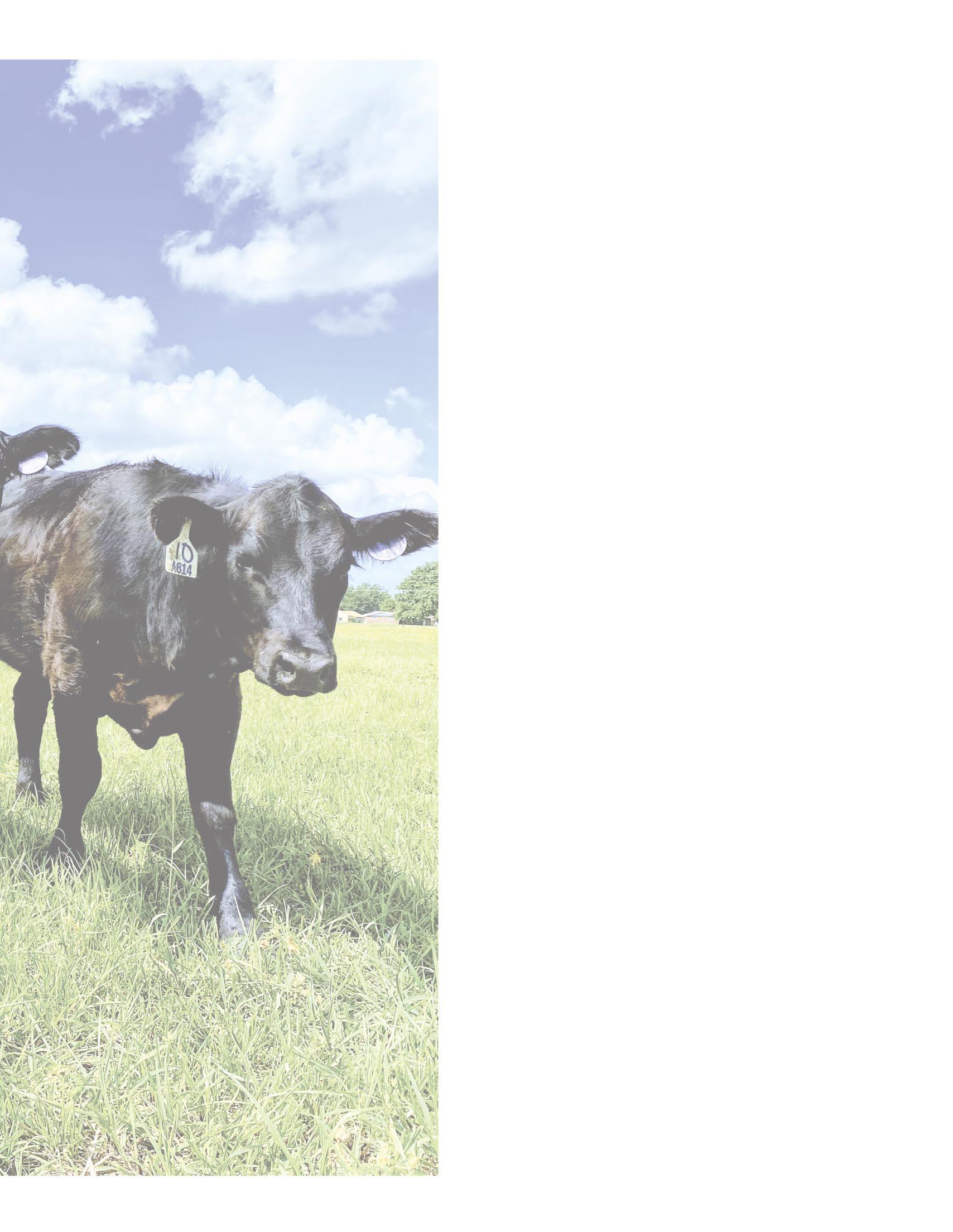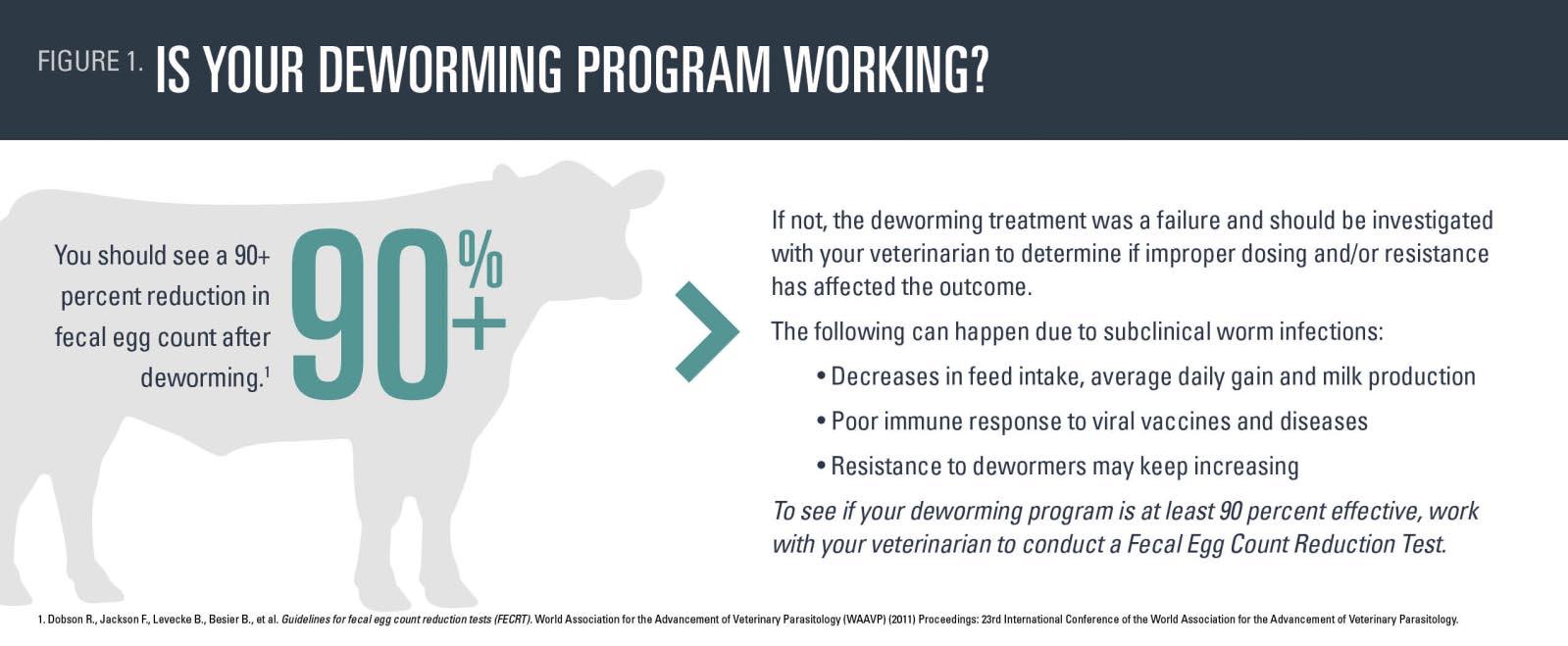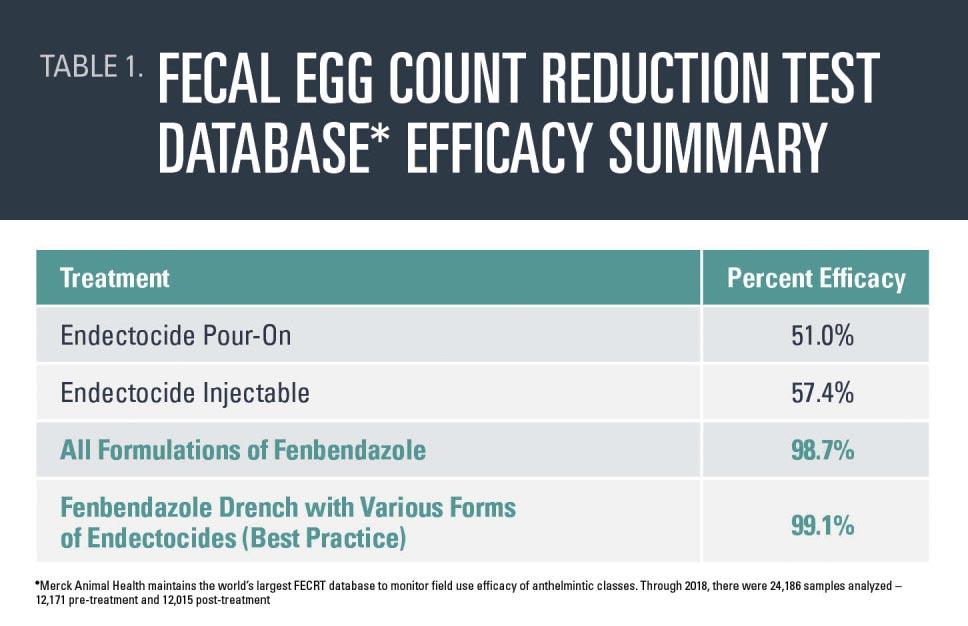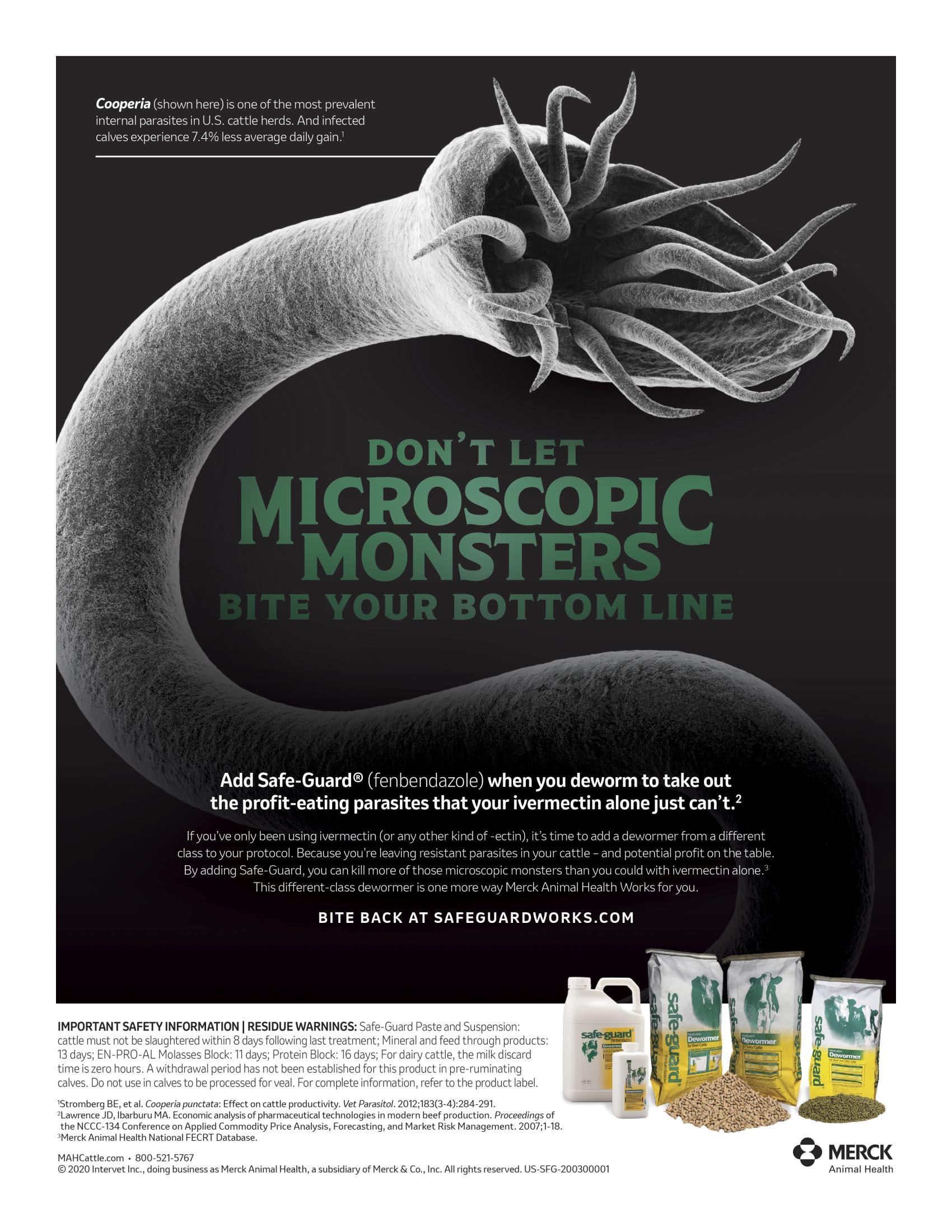
3 minute read
How well is your parasite management program working?
By Harold Newcomb, D.V.M., Technical Services Manager, Merck Animal Health
Parasites impact all segments of cattle production from the cow/calf operation to the feedlot. The No. 1 thing they do is reduce feed intake, which also negatively affects average daily gain, reproduction effi ciency and milk production, as well as impair the immune response to vaccines and diseases.
Diagnostic testing is helpful in determining what parasites are present, as well the parasite load.
Do you know how well your parasite management program is working? If you’re only using an endectocide, such as ivermectin, you may only be getting half of the reduction in worms necessary to maintain animal performance. You may also be contributing to the dewormer resistance.
For more than a decade, Merck Animal Health has maintained the world’s largest Fecal Egg Count Reduction Test (FECRT) database to monitor field use efficacy of dewormers approved for use in cattle in the U.S. From 2009-18, results from 721 trials and more than 24,000 samples, representing more than 24 states, have been compiled.
The bottom line is the endectocide pour-on and injectable products performed well below the 90 percent fecal egg count reduction threshold that is critical to ensure proper parasite management (Figure 1). With an endectocide pour-on product, a mere 51 percent efficacy was attained. Nearly half of the eggs remained 14 days after receiving the pour-on.
Adding fenbendazole made a tremendous difference. When fenbendazole was added, 99.1 percent effectiveness was obtained (Table 1). Not only can this make an improvement in animal performance, using two or more classes of dewormers concurrently can help to reduce the rate of resistance, extending the useful life of each class of dewormer several years.
Diagnostics are critical
Diagnostic testing is helpful in determining what parasites are present, as well the parasite load. The FECRT protocol is a critical tool to determine if your deworming program is working.

Jim Hollenback is a nutritionist for Farmers Cooperative
Association in Baxter Springs, Kansas. In order for nutrition programs to be successful for his cattle-producing clients, it’s important to have effective parasite management.
“We recommend using FECRT to determine the parasite status and gain a baseline understanding of the parasite load,” says Hollenback. He typically works with the producer’s veterinarian to conduct the diagnostic testing.
“It can be eye-opening for producers – many have heard about parasite resistance – but until the FECRT is conducted and they see the results, they often don’t realize the significance of it to their own operation.”
A FECRT includes collecting 20 samples the day of deworming followed by another 20 samples 14 days after treatment. In the samples collected 14 days after treatment, at least a 90 percent reduction in fecal egg count (FEC) should be observed in order to know the anthelmintics are working properly and a successful deworming was accomplished.
For best results, sample animals from the same age and management group. The ideal range is cattle six months to two years of age. For feedlot and stocker cattle, test and treat incoming cattle on arrival to check parasite population. Test grazing cattle after sufficient grazing time of at least two months. For cow/calf operations, sample cattle in pastures. For dairy, sample replacement heifers or freshening cows.
If the FECRT shows less than a 90 percent reduction in FEC, then additional investigation is warranted to determine if the dewormers were given correctly and at the correct dose.
In some instances, additional diagnostics are needed to confirm resistance issues. Testing with PCR (molecular or DNA-based) testing can identify specific parasite species, which provides a basis for highly specific targeted treatments of those parasites. This testing can also assist in developing future diagnostic and treatment plans.
Best practices for deworming
In addition to annual diagnostic testing and working with your veterinarian, there are a couple best practices that will help ensure maximum efficacy from your deworming protocol.

First, concurrently use two or more classes of anthelmintics. Not only does a concurrent deworming program most effectively control internal parasites, it also helps ensure a sustainable anthelmintic program that helps keep resistance to a minimum. In grazing operations where concurrent deworming is not feasible, the use of a feedgrade dewormer with fenbendazole alone provides very high deworming efficacy.
There are three classes of dewormers approved for use in cattle in the U.S. – benzimidazoles, endectocides or macrocylic lactones, and imidazothiazoles. The two most commonly used are endectocides and benzimidazoles.
Second, weigh or properly estimate animal weights so a full dose of dewormer is used. Administering less than the recommended amount may not fully treat the parasites and speeds development of resistant parasites.
Hollenback likes the feed-through forms of fen bendazole, especially for his stocker and cow/calf clients who have cattle on pasture. “Deworming cattle on pasture doesn’t require gathering and running cattle through the chute, and it can be highly effective,” says Hollenback. “When we use fenbendazole, we see positive efficacy results when we run the FECRT.”
Altogether, these anthelmintic best practices, coupled with proper animal and forage management, are important to the overall stewardship of cattle.

Harold Newcomb, D.V.M., technical services veterinarian for Merck Animal Health, encourages cattle producers to work with their nutritionist and veterinarian to use FECRT and PCR testing to help ensure effective dewormer use.












